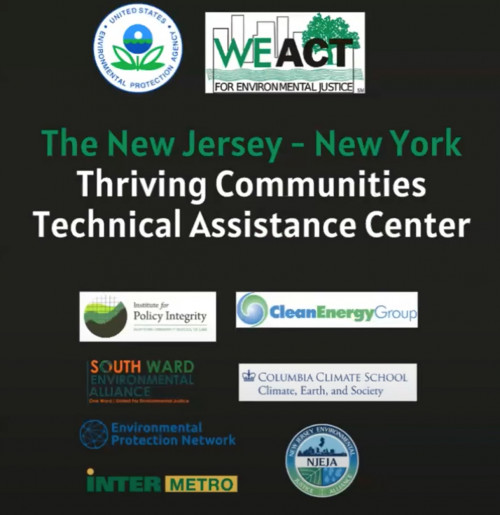Environmental conservation laws play a critical role in safeguarding natural resources and ensuring sustainable development. Over the years, these laws have evolved to address growing concerns about climate change, biodiversity loss, pollution, and deforestation. In recent times, significant legislative changes have been introduced to strengthen environmental protection efforts globally. This article provides an overview of the most recent environmental conservation laws, examining their objectives, impacts, and the challenges they face. By understanding the scope and influence of these laws, we can better appreciate their importance in protecting our planet for future generations and consider potential areas for improvement to meet ongoing environmental challenges.
Let’s explore this topic in detail with alijyun.com
1. Introduction
Environmental conservation laws are playing an increasingly critical role in tackling the world’s complex environmental issues. These laws are designed to protect ecosystems, curb pollution, and foster the sustainable use of natural resources, guaranteeing a healthy and balanced environment for future generations. As concerns over climate change, deforestation, and habitat destruction escalate, governments worldwide are implementing stricter regulations to minimize environmental damage.
Recent legislative efforts are aimed at updating existing laws and introducing new policies to bolster conservation initiatives. This signifies a persistent commitment to safeguarding biodiversity, fostering renewable energy, and combating pollution. However, as with any legislative action, challenges persist in enforcing these new measures, raising public awareness, and achieving a balance between economic growth and environmental protection.
This article delves into the significance of conservation laws, examining recent, influential regulations and their impact on the environment and society. Through analyzing both achievements and opportunities for improvement, we aim to gain a comprehensive understanding of how these laws contribute to shaping our world.

2. Importance of Environmental Conservation Laws
Environmental conservation laws play a vital role in preserving the delicate equilibrium between human activity and the natural world. They act as a legal foundation for safeguarding ecosystems, wildlife, and natural resources, ensuring their preservation for future generations. Without these regulations, unchecked industrial expansion, pollution, and deforestation could result in irreparable damage to the environment. Such damage would encompass the loss of biodiversity and the deterioration of air, water, and soil quality, leaving lasting negative consequences.
Conservation laws play a crucial role in mitigating climate change by promoting sustainable practices. They regulate emissions, encouraging responsible energy production, agriculture, and land use. These laws also protect endangered species and their habitats, safeguarding biodiversity, which is essential for a healthy and resilient planet. Moreover, they hold individuals and businesses accountable for environmental damage, fostering responsible behavior and encouraging a more sustainable future.
Enforcing these laws allows governments to achieve a delicate equilibrium between economic growth and environmental preservation. This fosters a sustainable future where society and nature can flourish together. The critical role these laws play in tackling global environmental challenges cannot be overemphasized.

3. Overview of Major Environmental Conservation Laws
Globally, numerous environmental conservation laws have been enacted to tackle critical ecological issues. A paramount example is the Clean Air Act, which regulates air pollution by establishing emission limits for industries and vehicles. This legislation aims to enhance air quality and safeguard public health. Similarly, the Clean Water Act prioritizes reducing water pollution and shielding essential water bodies from contamination by industrial waste and agricultural runoff.
The Endangered Species Act stands as another landmark law, crafted to safeguard species facing extinction. Its core objective is to preserve their habitats and thwart harmful activities that threaten their survival. On a global scale, the Paris Agreement serves as a crucial treaty in the fight against climate change. This agreement underscores the commitment of participating nations to curtail greenhouse gas emissions and mitigate the extent of global temperature increase.
Furthermore, the Convention on Biological Diversity emphasizes the preservation of ecosystems, species, and genetic diversity, ensuring the sustainable utilization of natural resources. These laws, along with other agreements such as the Kyoto Protocol and the Montreal Protocol, establish crucial precedents for global environmental action. Collectively, they constitute a comprehensive legal framework designed to safeguard the planet’s ecosystems and foster sustainable development.

4. Impact of Recent Laws on Environmental Protection
Recent environmental conservation laws have played a pivotal role in safeguarding ecosystems, curbing pollution, and mitigating climate change. These laws have spurred progress in renewable energy by enacting policies that incentivize the use of solar, wind, and other sustainable energy sources. This shift has decreased reliance on fossil fuels, resulting in lower carbon emissions and contributing to the international endeavor to combat climate change.
Stringent regulations on plastic waste management, including bans on single-use plastics, have significantly reduced ocean pollution, safeguarding marine life and ecosystems. Recent legislation has bolstered habitat protection efforts, with governments establishing more protected areas and enacting stricter penalties for illegal deforestation and poaching. These measures have facilitated the recovery of endangered species and the preservation of biodiversity.
Furthermore, global accords like the Paris Agreement have spurred nations to establish ambitious climate targets, promoting international collaboration on environmental matters. Businesses are facing mounting pressure to address their environmental footprint, as regulations tighten concerning emissions and waste disposal.
While positive progress has been made, challenges persist, particularly in enforcing regulations and finding a balance between economic interests and environmental preservation. Nonetheless, the overarching effect of recent conservation laws is undeniable: they have facilitated a more sustainable future by promoting eco-conscious practices and bolstering international environmental protection initiatives.
5. Challenges and Criticisms
Environmental conservation laws, despite notable progress, encounter significant challenges and criticisms. One prominent obstacle is the lack of effective enforcement. Many nations struggle to implement these laws consistently, particularly in regions grappling with political instability, corruption, or limited resources. This hinders regulatory efforts, allowing illegal logging, poaching, and pollution to persist unchecked, ultimately undermining conservation goals.
A significant hurdle lies in achieving equilibrium between economic development and environmental protection. Industries, especially in emerging economies, frequently perceive conservation laws as hindrances to growth. They contend that rigorous environmental regulations can result in elevated operational expenses, job displacement, and diminished competitiveness on the global stage. This discord generates political pressure to diminish or retract environmental safeguards, particularly in economies heavily reliant on natural resources.
Critics also point out that some laws are outdated or fail to address emerging environmental challenges. For instance, many regulations were created before the full scope of climate change and its impacts were understood, necessitating updates to reflect current scientific knowledge. Additionally, environmental justice advocates argue that these laws often do not adequately consider the disproportionate impact of environmental degradation on marginalized communities.
In the end, while these laws are crucial, addressing these challenges demands robust enforcement, revised policies, and a fairer approach to guarantee their effectiveness in safeguarding the environment.
6. Future Outlook and Potential Improvements
The future of environmental conservation laws brims with promise, yet achieving its full potential demands significant improvement. To bolster effectiveness, stronger enforcement mechanisms are crucial. This necessitates increased funding for regulatory agencies, enhanced training for enforcement personnel, and more stringent penalties for violators. Furthermore, international cooperation must be strengthened to address transboundary environmental challenges such as deforestation, ocean pollution, and climate change.
Laws require regular updates to reflect scientific advancements and emerging environmental threats. For example, comprehensive climate policies are crucial to mitigate the escalating effects of global warming. Governments should consider integrating ambitious carbon reduction targets, incentives for green energy, and biodiversity conservation measures into their legal frameworks.
Furthermore, prioritizing environmental justice is essential. Policies should be crafted to guarantee that marginalized communities, disproportionately burdened by environmental harm, are shielded from its impact and given equitable access to the advantages of conservation initiatives.
In conclusion, promoting public engagement and corporate responsibility can cultivate wider support for these environmental laws. By empowering communities to participate in environmental decision-making processes and urging businesses to embrace sustainable practices, we can collectively pave the way towards a more resilient and environmentally conscious future.
7. Conclusion
In conclusion, environmental conservation laws are crucial for safeguarding our planet’s ecosystems and ensuring sustainable development for future generations. These laws provide a vital framework for regulating pollution, protecting endangered species, and promoting renewable energy initiatives. Recent legislative efforts have demonstrated positive impacts, resulting in improved air and water quality, increased habitat protection, and heightened global cooperation on climate change.
While these laws hold promise, their effectiveness can be hampered by challenges like enforcement gaps, economic pressures, and the need for updated regulations. The criticisms leveled at these laws underscore the importance of striking a balance between environmental protection and economic growth.
Moving forward, we must prioritize continuous improvement in environmental conservation legislation. This involves reinforcing enforcement measures, modernizing laws to align with current scientific understanding, and guaranteeing adequate protection for marginalized communities. Engaging the public and fostering corporate accountability will further solidify support for these essential efforts.
In the end, by actively addressing challenges and welcoming opportunities for improvement, we can guarantee that environmental conservation laws effectively safeguard our natural heritage. This will lead to a healthier, more sustainable planet for everyone.
alijyun.com

